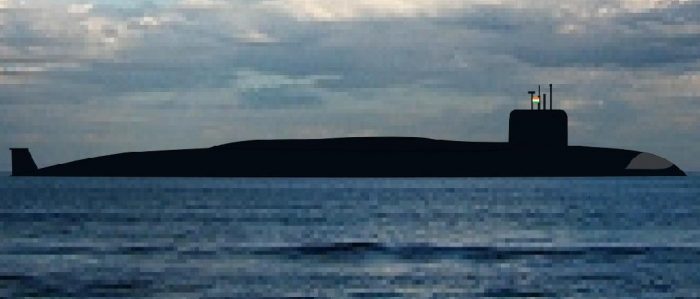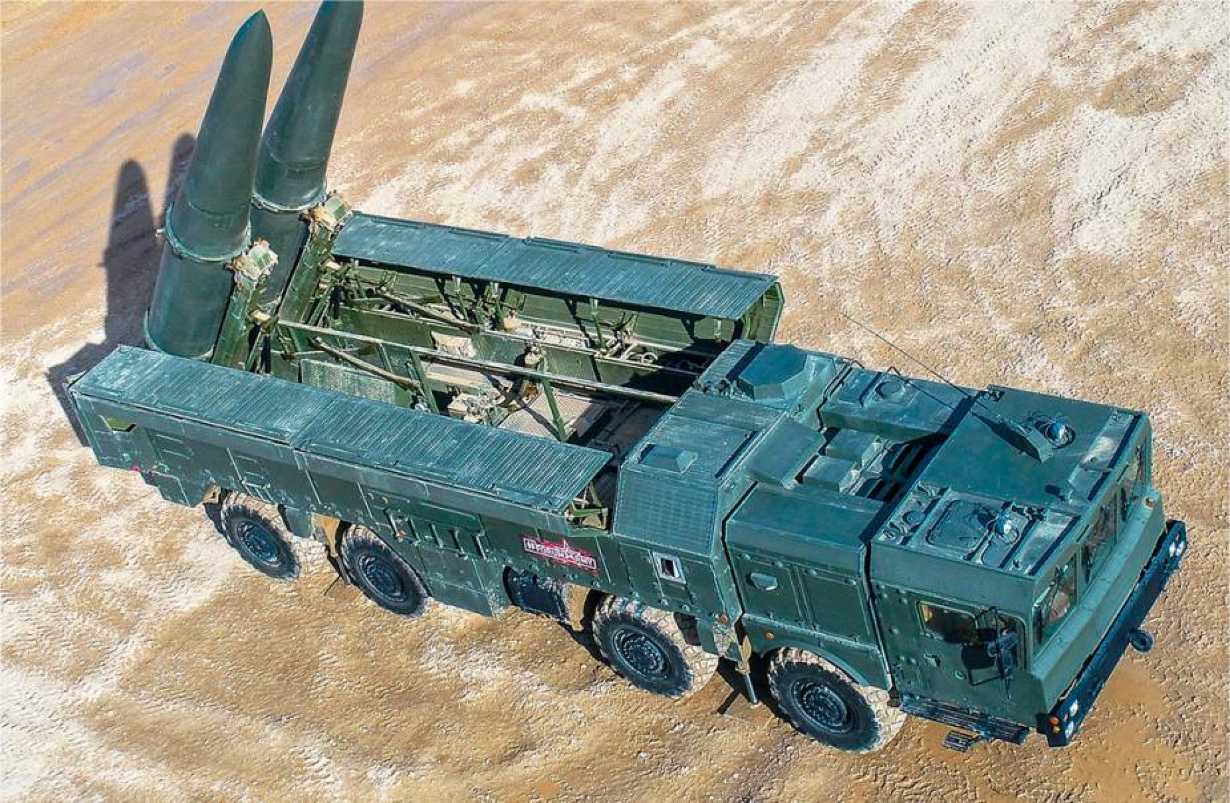Armed With K-15 Missiles, India’s Nuke-Powered INS Arighat Puts China’s Yunnan, Pakistan’s Islamabad Under Navy’s Crosshair

INS Arighat, the second nuclear-powered submarine of the INS Arihant class, was launched on November 19, 2017, by Nirmala Sitharaman at the drydock of the Ship Building Centre (SBC) in Visakhapatnam.
At the time of its launch, it was estimated that it would be commissioned into the Indian Navy (IN) 3-4 years.
Capability Enhancement
Not surprisingly, INS Arighat features many improvements and capability enhancements over INS Arihant, which was floated in 2009 and commissioned on August 26, 2016.
Arighat, of the Arihant class, will carry several new pieces of equipment, including new-generation sensors and periscope, compared to the first ship.
“It would have double the number of missile hatches than its predecessor. It can carry more missiles and also will have a more powerful reactor,” Navy sources said.
AfriPrime App link: FREE to download...
https://www.amazon.com/Africircle-AfriPrime/dp/B0D2M3F2JT
On August 29, 2024, in a post on X, the ToI reported, “While INS Arighat is of the same size & displacement as INS Arihant, she is much more capable & can carry more K-15 missiles.It’s not clear how the SSBN could be fitted with more missile launch tubes without altering its size and displacement. For the purpose of this narrative, we will assume that INS Arighat does not feature a change in its missile complement.
While it retains the 83 MW reactor rating of its predecessor, INS Arihant, it’s likely that INS Arighat features improvement in its nuclear propulsion technology and is able to operate more stealthily (lower noise), increasing its operational effectiveness.
Like its predecessor, INS Arighat will also be armed with 750-km range K-15 missiles.
Understanding Arighat’s Strategic Capability
INS Arihant class submarines feature four missile launch tubes, each capable of housing three K-15 missiles with a 750 km range. Alternatively, a launch tube can be fitted with a single K-4 missile with a 3,000 km range, which is yet to be operationally deployed.
As an SSBN, INS Arighat is a strategic asset of the IN. However, the K-15 missile currently deployed on INS Arighat has a modest 750 km range that is generally associated with tactical missiles. The contradiction stems from the nascent nature of India’s second-strike capability and the urgency to deploy it.
The primary role of an SSBN is to provide a credible second-strike capability in case of an adversary nuclear attack. Despite its range limitation, the K-15 missile does represent an effective second-strike capability, considering that our nuclear-armed adversaries are right across our borders. The K-15 can strike at strategic targets and population centers of both our adversaries.
AfriPrime App link: FREE to download...
https://www.amazon.com/Africircle-AfriPrime/dp/B0D2M3F2JT
In the case of Pakistan, launched from safe waters, the missile would threaten the entire Sindh province, including Karachi, Pakistan’s largest city and economic hub; the entire province of Balochistan, including cities like Quetta and Gwadar and major cities in Punjab, including Lahore, Faisalabad, and Multan.Operating closer to Pakistan’s coast, at a somewhat higher risk to itself, an Arihant-class SSBN could target parts of northern Punjab, including the capitals of Islamabad and Rawalpindi.
The number of strategic targets within range of the K-15 missile far exceeds our second-strike targeting capability, which is represented by the very limited number of missiles on our (soon-to-be) two operationally deployed SSBNs.
The situation is the same even against China. If launched from the northern part of the Bay of Bengal, the K-15 could strike strategic targets in the Tibet Autonomous Region and China’s Yunnan province, theoretically including Kunming, the Yunnan capital.
India’s operationally deployed second-strike capability will continue to grow over the next 2 to 3 decades, by which time we will be able to develop and deploy larger SSBNs with longer-range missiles.
As things stand, India has acquired a limited second-strike capability, which is not constrained by the K-15 missile’s limited range at this stage.

K-15 Missile
Despite its limited range, the K-15 missile poses a lethal threat to adversary targets because of its advanced technical characteristics.
The K-15 can be classified as a quasi-ballistic missile. A quasi-ballistic missile doesn’t follow a pure ballistic trajectory. It stays within the atmosphere and flies to its targets at hypersonic speeds, performing maneuvers to confuse enemy defenses. Its time to target is considerably less than that of a ballistic missile, giving the enemy less reaction time.
The K-15 is comparable to Russia’s Iskander missile, which can cruise at a hypersonic speed of Mach 6 – 7 at the height of 50 km and maneuver to evade ballistic missile defenses. (The Iskander-M weighs 4,615 kg and carries a warhead of 710 – 800 kg to a range of 480 km, achieving a CEP of 5 – 7 m.)
AfriPrime App link: FREE to download...
https://www.amazon.com/Africircle-AfriPrime/dp/B0D2M3F2JT

The K-15’s first stage reportedly takes it to an altitude of 7km. The second stage lofts it further up to 40 km. The missile then flips over and flies at constant altitude at seven times the speed of sound like a cruise missile.
K-15 Operational Status
The K-15 missile is under serial production.
The missile was reportedly declared operational in August 2018 after being successfully tested from INS Arihant 3 times on August 11 and 12, 2018, from a depth of 20m.
The IN conducted 2 successful tests on August 11 and followed up the success with a perfect launch in full operational configuration on August 12, 2018.
“All three missiles were fired from the submarine positioned nearly 20 m deep undersea, about 10 km off the Vizag coast. It perfectly followed the pre-designated trajectory before zeroing on the target with high accuracy, reaching close to zero circular error probability,” an official told TNIE.
Conclusion
As a developing country, India’s pursuit of military technology tends to be progressive, aimed at deterrence rather than dominance.
India has chosen a low-risk approach to its quest for an undersea second-strike capability. In its pursuit of SSBN capability, it has opted for smaller boats with smaller missile complements and a limited range of missiles. It prefers a smoother learning curve to master the complex technology associated with nuclear propulsion and underwater missile launches.
At the same time, India hasn’t taken its eyes off its strategic goal, which is to acquire a second strike capability at the earliest.
India’s nuclear adversaries are right across our borders, so the limited range of our current second-strike deterrent missile is not as important as the ability of the missiles to penetrate adversary defenses with near certainty.
Operational deployment of the K-15 makes good sense.
AfriPrime App link: FREE to download...
- Questions and Answers
- Opinion
- Motivational and Inspiring Story
- Technology
- Live and Let live
- Focus
- Geopolitics
- Military-Arms/Equipment
- Segurança
- Economy
- Beasts of Nations
- Machine Tools-The “Mother Industry”
- Art
- Causes
- Crafts
- Dance
- Drinks
- Film/Movie
- Fitness
- Food
- Jogos
- Gardening
- Health
- Início
- Literature
- Music
- Networking
- Outro
- Party
- Religion
- Shopping
- Sports
- Theater
- Health and Wellness
- News
- Culture

